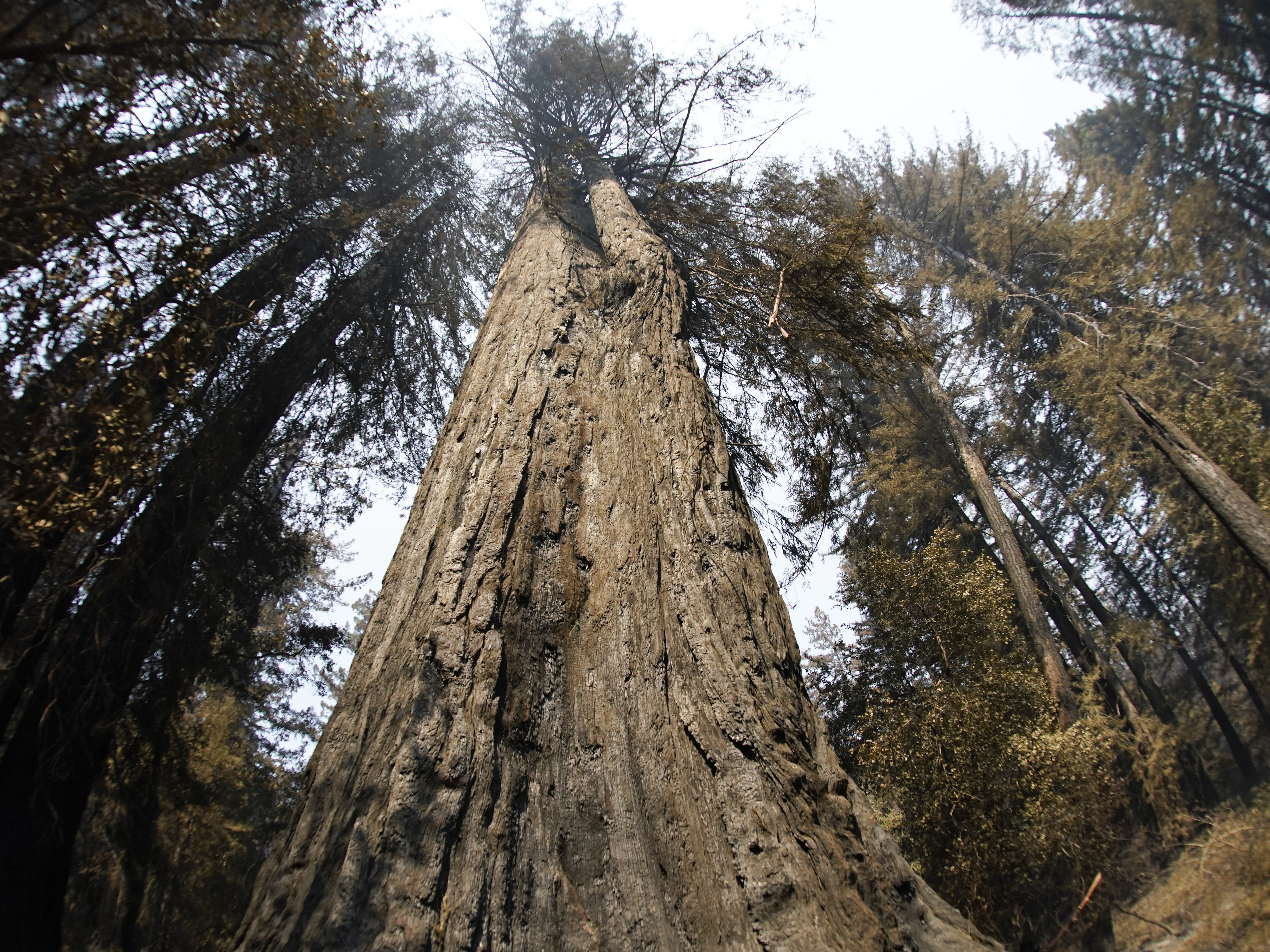
An old-growth redwood tree named "Father of the Forest" in Big Basin Redwoods State Park, California in August 2020. Some trees in the park have been standing for 2,000 years.
Marcio Jose Sanchez / AP
President Joe Biden will sign an executive order to inventory and protect old-growth forests while visiting Seattle Friday.
The order requires the Department of the Interior and Department of Agriculture to come up with a shared definition of mature and old-growth forests and gives them a year to take stock of their numbers in the U.S. After collecting that data, the agencies must come up with new policies to manage and conserve these wooded areas, with an eye towards threats like wildfires.
The carbon stored by forests, harvested wood products, and urban trees offsets around 14% of carbon released each year in the U.S., according to a 2020 Forest Service report. Older, wider trees tend to store more carbon, although there is some scientific debate over how much carbon they continue to take out of the atmosphere as they age.
While definitions of old-growth and mature trees vary depending on the type of forest, the term was initially applied to stands containing trees that are 150 years old.
The executive action does not take steps to limit logging of old growth forests on federal lands, as a coalition of environmental groups have been calling on the administration to do. In addition to reducing greenhouse gas emissions, "conserving our remaining older forests and trees on federal public lands is one of the country's most straightforward, impactful and cost-effective climate solutions," they wrote.
"It's a very good start on the things that we've been asking for," said Kirin Kennedy, director of people and nature policy at the Sierra Club, one of the members of that coalition. She said her group is not necessarily calling for a moratorium on logging old-growth trees, but for a science-based approach to managing them.
"We want to protect old trees, but we also want to make sure communities are protected," said Kennedy.
In press briefing, senior administration officials said wildfire risk reduction is an important tool for protecting not only old trees but the people living near them.
The new executive action also directs federal agencies to:
The Earth Day push comes after a halting year for the White House's climate agenda. After failing to garner enough support for the Build Back Better Act, which contained $555 billion in funding for investments in climate initiatives, Biden pivoted to calling for more fossil fuel extraction to support European allies weaning off of Russian oil and gas.
In the lead up to Earth Day, the White House touted climate investments made through other legislation, such as the Infrastructure Investment and Jobs Act, which includes funds for energy efficiency and green transit infrastructure, as signs he is making progress towards the goal of cutting greenhouse gas emissions by 50-52% before the decade is out.
Copyright 2022 NPR. To see more, visit https://www.npr.org.

